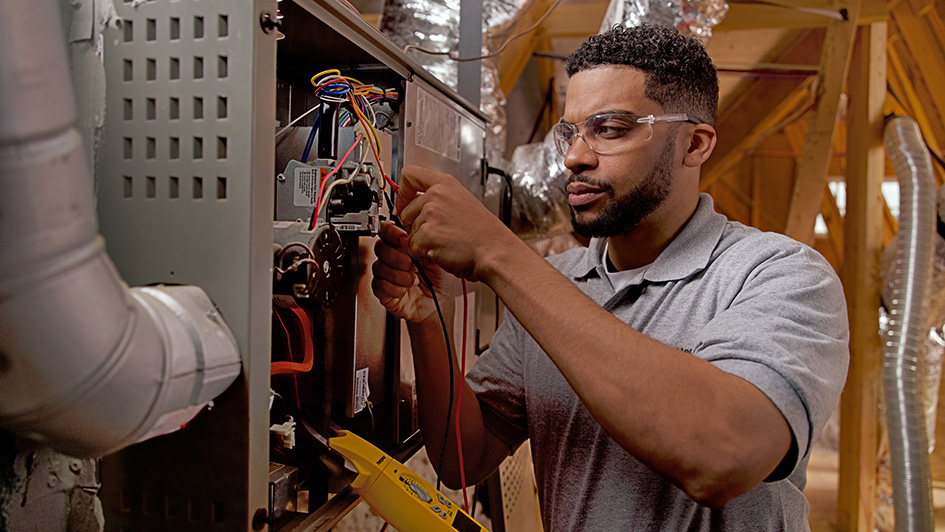
A furnace is often a background player at home, helping keep you warm during the cold winter months. It regularly won't be noticed until something breaks down.
One source could be that your furnace has a cracked heat exchanger. It can potentially be hazardous, so it’s critical to know the symptoms of a cracked heat exchanger and what to do if you suspect that is the problem.
What Is a Heat Exchanger in a Furnace?
A heat exchanger helps transition heat from the combustion chamber inside your furnace to the air that flows through the system. It usually does this through coils or tubes that warm the air while serving as a barrier to keep byproducts created in the combustion chamber, called flue gasses, from leaking out into your home.
Is a Cracked Heat Exchanger Dangerous?
Given its key role, it isn't surprising that a cracked heat exchanger can be hazardous. A crack in the heat exchanger can allow dangerous gasses – including carbon monoxide, which can be lethal – to be distributed across your home.
For that reason, do NOT use your furnace if you suspect there's a crack in the heat exchanger, as letting it run could make the whole household ill. Reach out to an HVAC professional immediately if you think your heating has a cracked heat exchanger that needs repair.
Four Symptoms of a Cracked Heat Exchanger:
- Furnace switches off: A crack in your heat exchanger can cause your furnace to switch off.
- Strange Smells: If the air escaping your furnace has a powerful chemical odor, it may be a sign gas is leaking through cracks in your heat exchanger. These byproducts, which will often smell like formaldehyde, are a significant warning sign.
- Carbon monoxide alarm goes off or you feel health problems: If a cracked heat exchanger is relieving carbon monoxide into your home, your carbon monoxide alarm could go off or household members might experience signs of carbon monoxide poisoning. Side effects include headaches, dizziness, weakness, nausea, vomiting or feeling sleepy. If the alarm goes off or you feel unusually tired, get out of the home right away and then call for help.
- Soot: If you spot black sooty accumulating around the exterior of your furnace, it’s another sign something could be seriously wrong.
What You Can Do if the Furnace Heat Exchanger is Cracked
If you suspect your furnace has a cracked heat exchanger, call a professional with extensive experience in furnace installation Safford as soon as possible so they can examine your system and, if required, perform a furnace heat exchanger replacement. Costs will fluctuate depending on the situation, but estimates often hover around $1,000 to $3,000.
Fortunately, the good news is that heat exchangers are often included in the warranty. You’ll want to confirm the warranty paperwork on your furnace, because while the warranty won't always cover the entire cost of repairs, it can significantly reduce your bill.
How to Prevent a Cracked Heat Exchanger in Your Home
One of the most convenient ways to prevent a problem in your furnace overall is through routine furnace maintenance. Furnaces provide the best possible return on investment when they run efficiently. Calling a skilled professional to check your furnace for broken-down parts, dirty filters and other common problems can keep you from getting a big bill later on.
It’s also helpful to take a look at your furnace filters every few months – it’s recommended some filters be swapped out every 90 days or sooner if they are dirty or grimy. While the filters aren't connected to the heat exchanger itself, the strain of drawing air through a clogged filter makes the entire furnace work more vigorously to accomplish its job. And the harder your furnace has to work, the more strain components like the heat exchanger will sustain.
